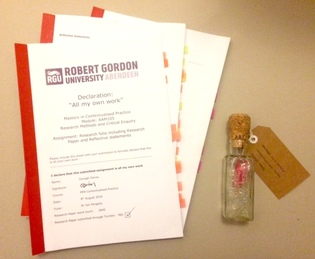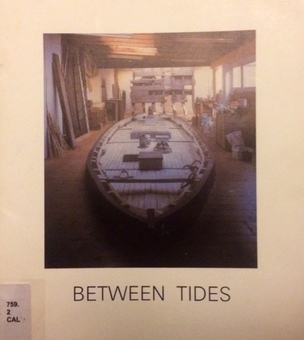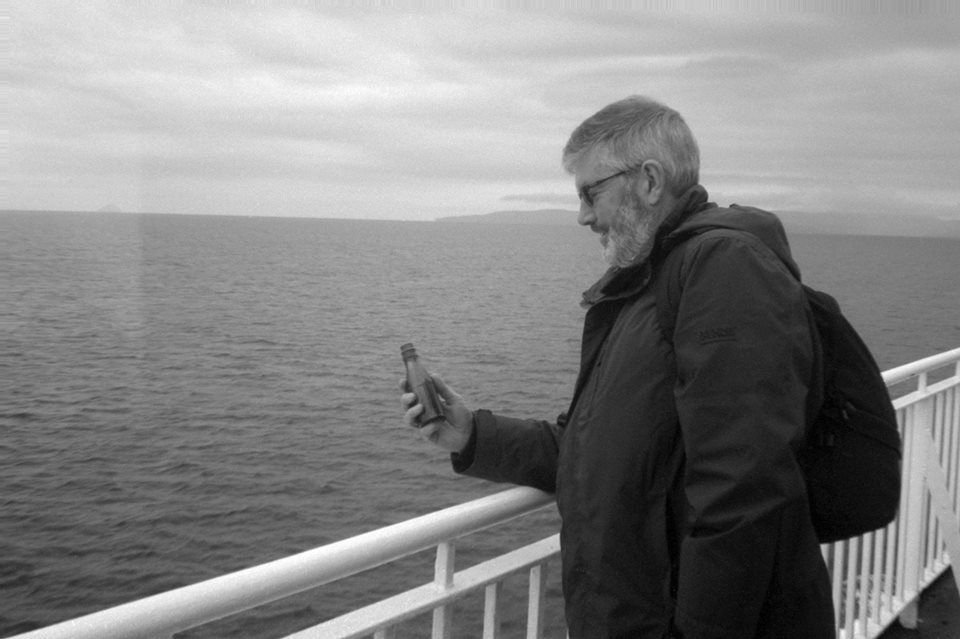|
The first tutorial of the new semester began with the reunion of classmates old and the introduction to classmates new. The latest intake included both fine art and design graduates and has helped to swell our numbers making for a lively and exciting Masters Show in September 2017. Introductions aside our principal tutor Dr Jon Pengally used the session to allow us to share with the new intake our experiences and reflections of the year past. His parting gift to us for doing so was the feedback for our research folio!
My folio in hand I retreated to the library to read then re-read 3 times more the observations and practical criticisms of my specialist tutor David Blyth. I was surprised to see arrow stick it notes throughout my documents at points he had considered noteworthy/interesting. In my feedback David included recommendations of authors and artists to research, I complied immediately and located volumes on Tony Cragg and Robert Callender. It was with Robert Callender that I fell in love intensely with both his words and his work. Like myself he is a maker and a compulsive collector of objects washed ashore. What inspired and surprised me the most about his art was that although he collected found objects it did not mean he necessarily used them in the creation of his works. His objects provoking him to produce other works that included sculptures constructed out of paper pulp and cardboard: these sculptures giving the illusion that they had been collected from the shoreline. Callender's sculptures opened the door to me that said the sum of the parts I collected was more than! One green bottle floating down the Clyde
From the Arran ferry it went in o'er the side This one's number ten Let's hope it's seen again! It went in on Saturday 8th about 10:15am from somewhere between Ardrossan and Brodick. All the best Donald The vast majority of photographers take for granted that what they see in the viewfinder of their camera is what they will see in the resulting exposed image. When you have made a pinhole camera though you have to determine the angle of view. This can be extreme especially when your camera is thin or deep. My suitcase camera has a focal length of 99mm. I knew that this would produce a wide angle of view but I decided it was best to test the parameters of my new toy before I took it out on some serious fieldwork. f 220 Exposure time - 13 minutes Distance of camera from skull - 100cm f220
Exposure time - 3 hours Distance of camera from skull - 5cm According to mrpinhole.com the perfect pinhole size for my suitcase camera is 0.42mm! To achieve this I invested in a set of minute drill bits and an Archimedes drill. Bad technique with my new tool ended with me frustratingly bending the 0.4mm drill bit. However I was more successful second time round and produced a lovely 0.45mm pinhole in a brass sheet gifted by my father. At lunchtime today I loaded my camera and set off for Keptie Pond. This time I did take a meter reading however half way through my 25 second exposure the sun came out. Not that I am disappointed. The exposure may be incorrect but the image is still lush! Focal length - 99mm
Pinhole size 0.45mm - f220 At lunchtime today I made a test exposure to ensure my new pinhole suitcase camera was light tight. I conducted the test in spirit of carefree abandon by making a guess at the exposure time. Ten elephants later I had captured the image that would prove the integrity of my 'painting with light magic fun-time box'! Focal length 99mm
Pinhole 0.8mm - f124 Semester one of the new academic session of my final year at Gray's School of Art has now finally arrived! On Friday I will be catching up with my classmates at our first tutorial with our new Course Leader Dr Jon Pengelly and in the afternoon I will be meeting my specialist tutor David Blyth to discuss the year ahead. Not that I have been inactive. On my Fridays set aside for my studies I have been both reading and making. The task that has been engaging me being the decision of which thesis element option to choose. The choices being:
The choice has not been hard and I have elected to do the dissertation. The decision being based on my realisation that I have gained much this year from the reading of critical thinkers both within and outwith my field of study. There are a few avenues that I could explore and at the moment I do not have a definite question I wish to engage with. In the meantime I have decided to begin by reading books that interest me, transcribing quotes that inspire me and seeing where these take me. Just now I am working my way through:
What I do know though is that my studies have been the beginning of an amazing journey of self discovery. I have fallen in love with making again and have created work-spaces and time to ensure that my practice continues after I have graduated. The coast, hills and isolation influence heavily my making. As does my constant need to collect the flotsam and jetsam that washes daily upon our shores. It seemed fitting therefore that I should use a suitcase for my dissertation to present and represent my journey. Last week I purchased from eBay an old suitcase for this task. Taking the concept further I have converted it into a pinhole camera to record the journeys I wish to critically discuss. Before construction I consulted my pinhole friend Donald Tainsh who advised me and introduced me to some helpful websites. His parting advice though made sure that I didn't get too hung up on the arithmetic....... "Don't get too bound up in the calculations. Remember that to make a pinhole exposure is to open a door on serendipity - every exposure is an experimental exercise in imprecision!" Such wise and kind friends I have! Through play great knowledge can be found! |
Archives
April 2024
|


